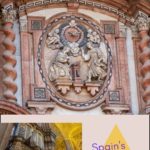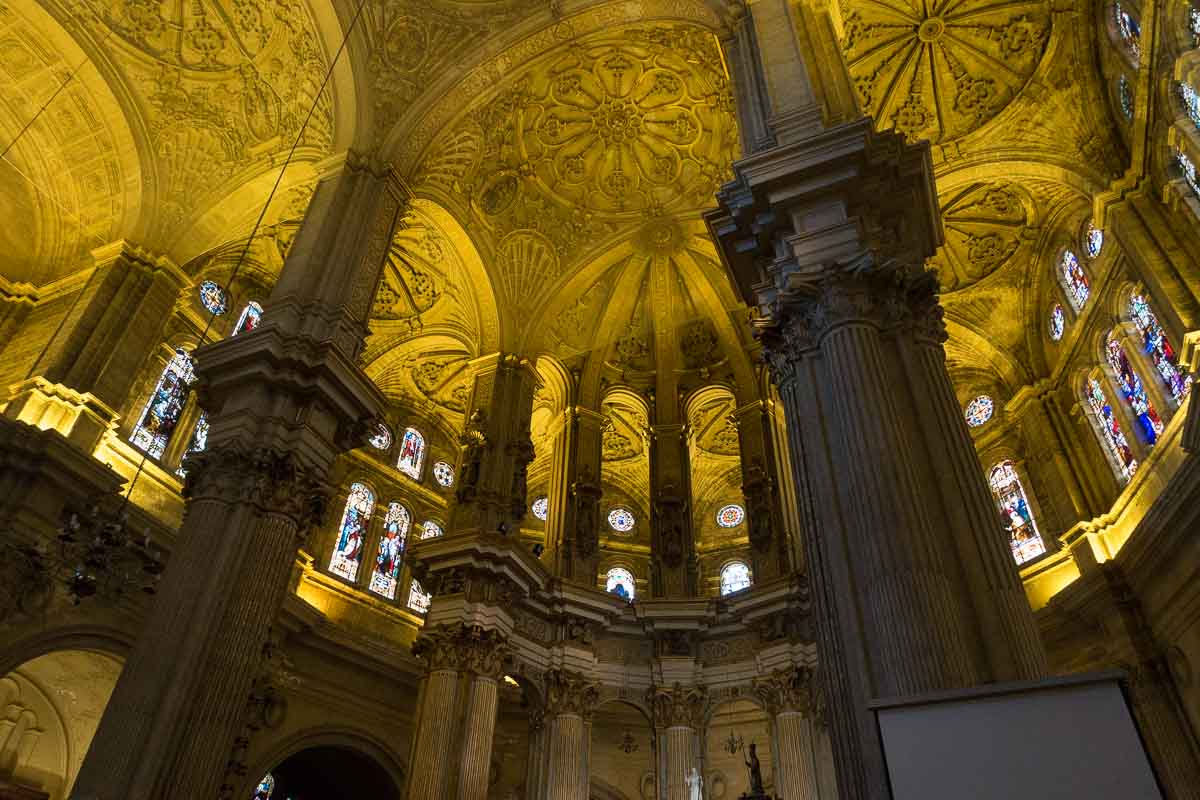
The Cathedral of Málaga (Catedral de Málaga,) also known as the Cathedral of the Incarnation, is the Roman Catholic cathedral located in the heart of Málaga, a city on the southern Andalusian coast of Spain. As in any Spanish city, the cathedral is one of the most important landmarks and is a notable example of the Renaissance and Baroque architectural styles.
Construction of the current cathedral began in 1528, and took more than 200 years to complete. It was built on the site of a former mosque, which was destroyed by the Christian conquerors after the city was captured from the Moors in 1487. The cathedral was designed by a series of architects, including Diego de Siloé, who originally designed a Gothic style cathedral, and, later, Pedro de Mena and Alonzo Cano, with the result that the Cathedral of Málaga manifests various architectural styles.
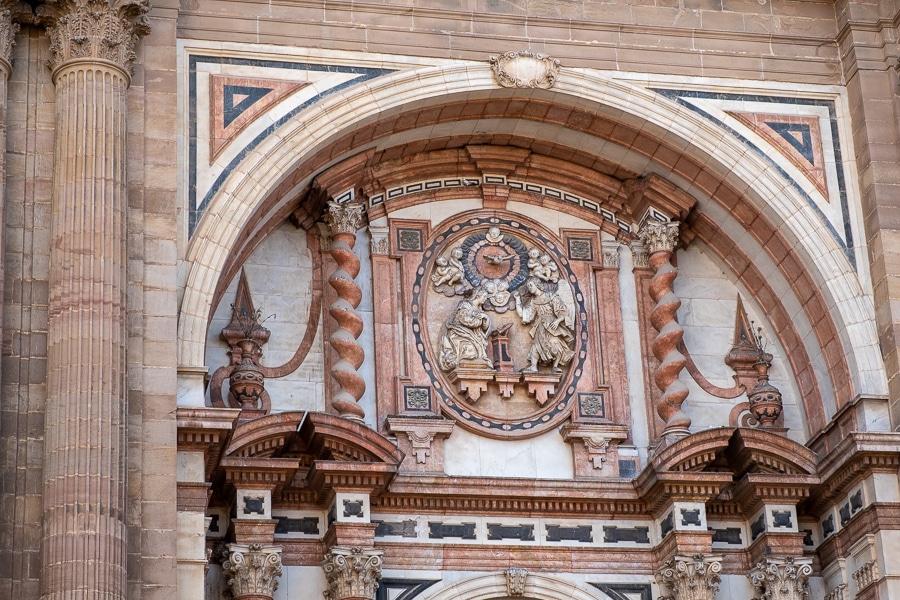
The Cathedral grounds include several buildings and courtyards. The façade of the cathedral is in the Baroque style, and features two bell towers, only one of which is complete. The completed tower is more than 84 meters (276 feet) high. The façade itself is decorated with intricate details and carvings, including images of saints and biblical scenes. The central portal is especially noteworthy, featuring a relief of the Immaculate Conception at the top.
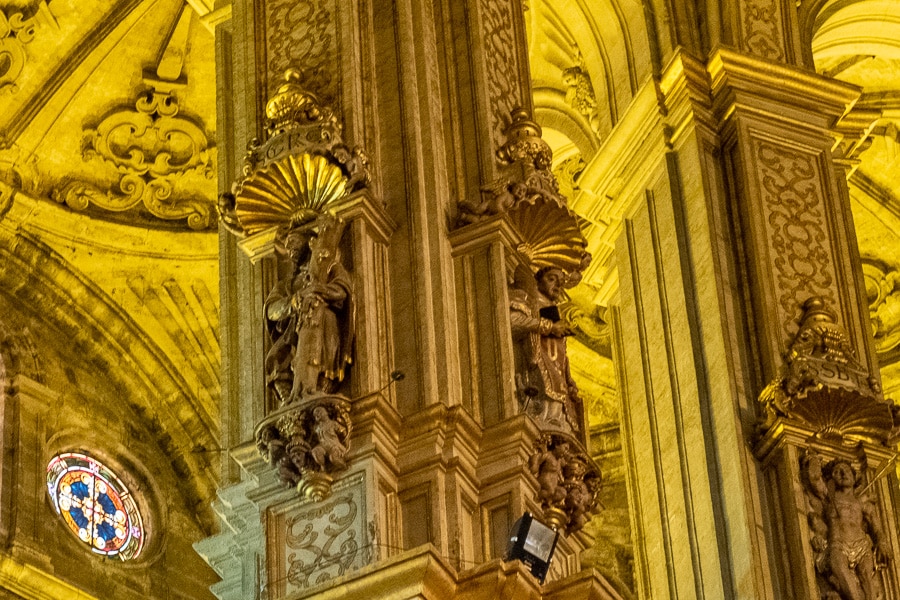
The interior of the cathedral features a variety of artistic and architectural elements. Of particular note is the design of the ceiling. The nave is wide and spacious, and its columns are decorated with numerous sculptures and paintings. The nave is lined with chapels in various styles. And the substantial columns are topped by prominent sculptures and even more baroque ornamentation.
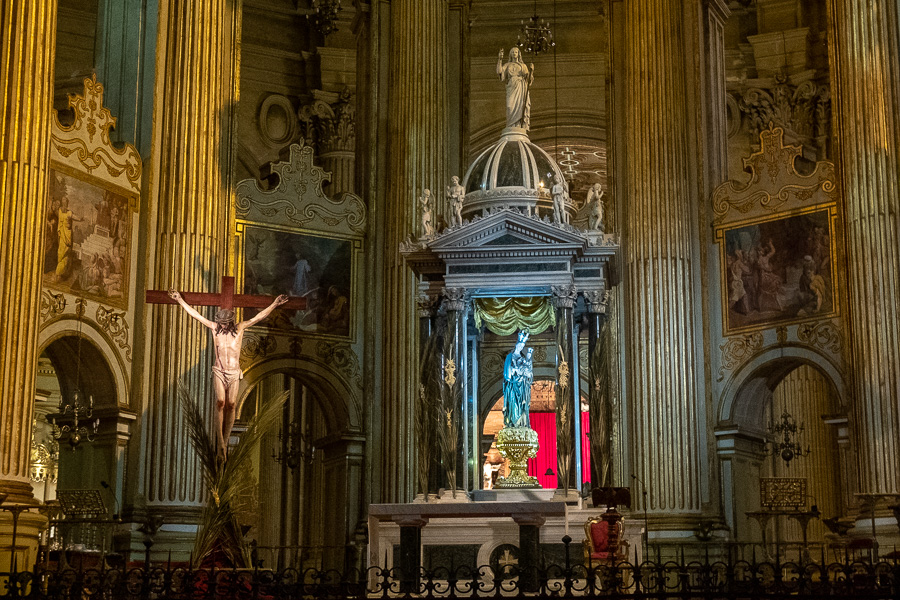
The central and most important artwork in the cathedral is the altarpiece with a baldacchino that shades a statue of the Virgin. That centerpiece is surrounded by a spectacular columnar tableaux that depicts scenes from the life of Christ.
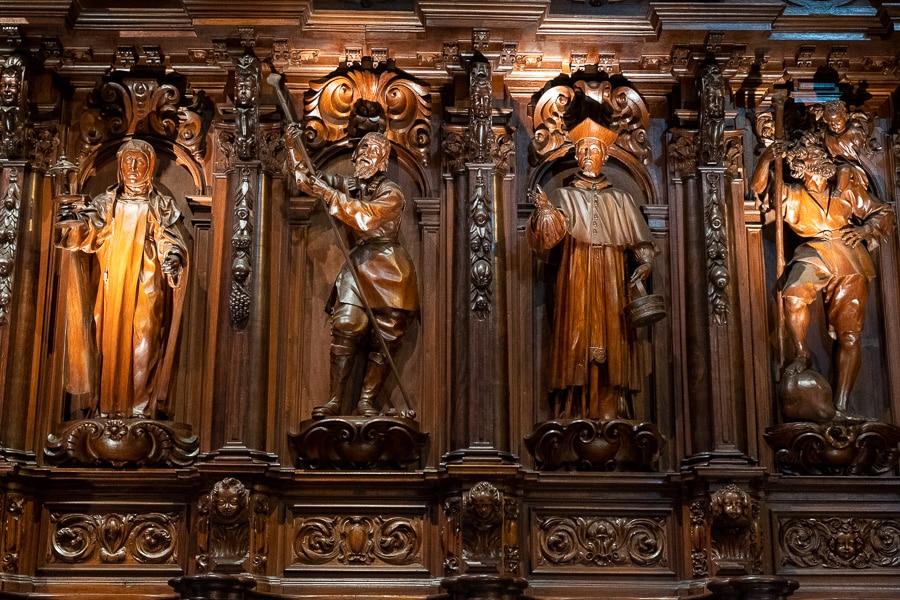
The choir stalls, which are located in the central nave of the cathedral in typical Spanish fashion, are made of carved wood and feature intricate depictions of saints and bishops. The 18th century organ, is one of the largest organs in Spain.
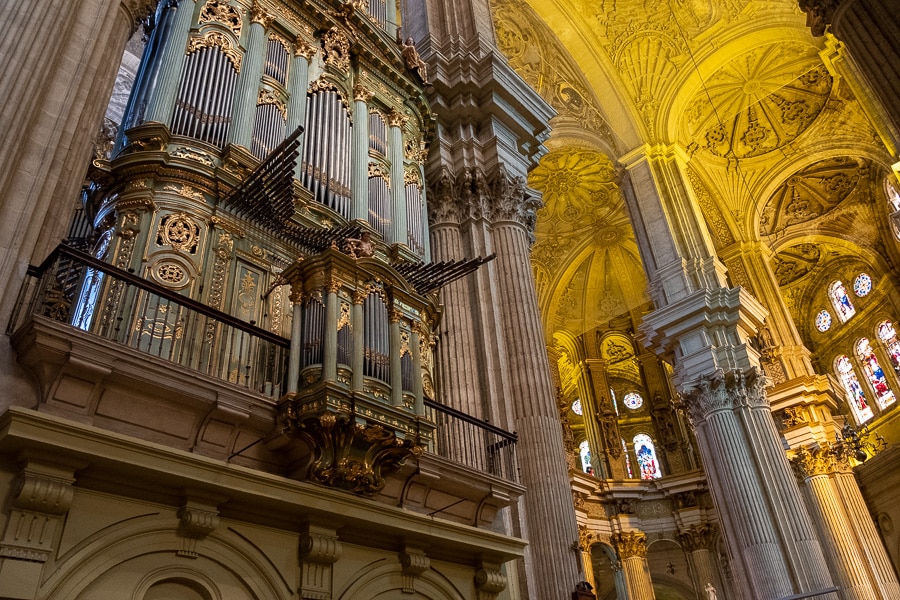
One of the most unique features of the cathedral is the “Santos Mártires” chapel, which is located behind the choir stalls. This chapel contains the remains of the patron saints of Málaga, Saint Ciriaco and Saint Paula, martyrs who were executed during the time of the Roman Empire. The chapel is decorated with intricate frescoes and sculptures, and it is considered to be one of the most beautiful and sacred spaces in the cathedral.
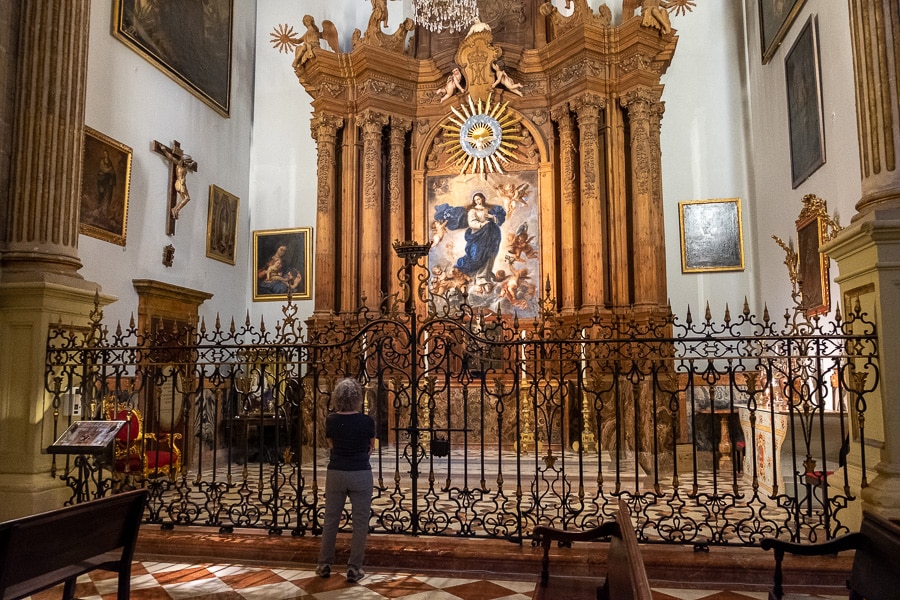
The cathedral also features a series of courtyards and gardens, which are open to the public. The main courtyard is known as the “Patio de los Naranjos” (Orange Tree Courtyard) near the public entrance of the cathedral is a peaceful space filled with orange trees and fountains.
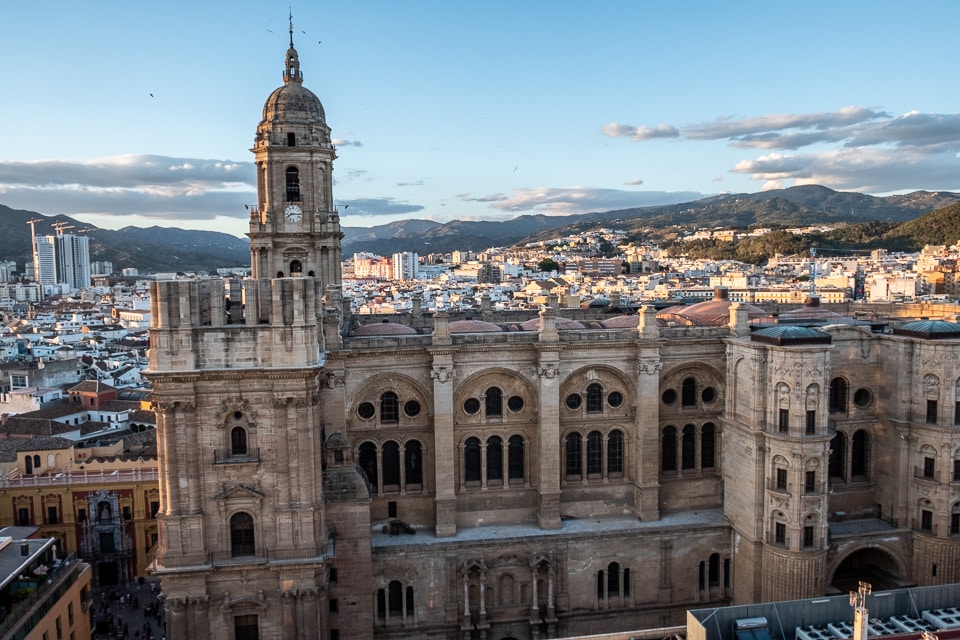
The cathedral was finally completed in 1782, but it was never fully finished. The original plans for the cathedral included two towers, but only one of them was built. The unfinished tower is called La Manquita, which means “the one-armed one”. According to some accounts, money originally dedicated to finishing the tower was sent to the British colonies in America to finance their revolution against British rule.
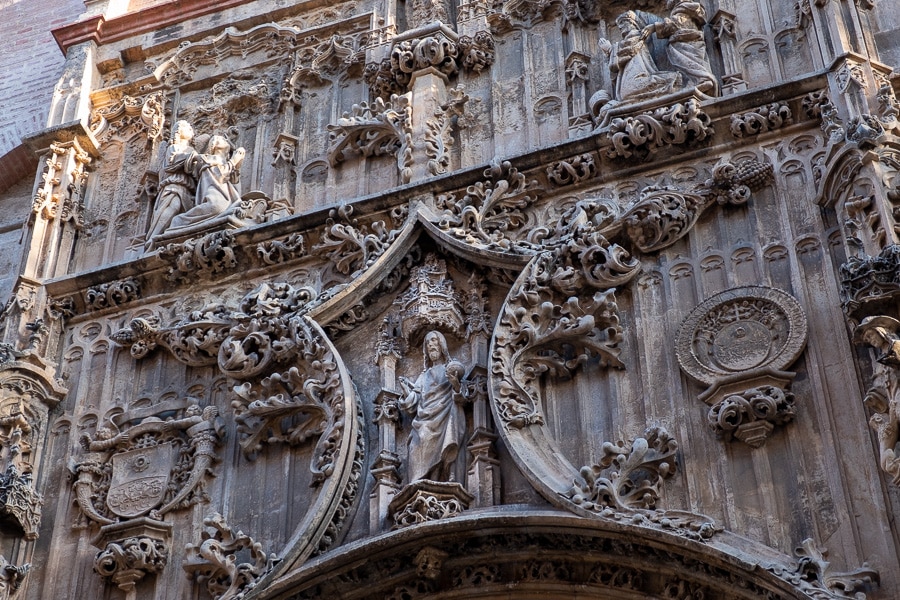
The Cathedral of Málaga is open Monday to Friday from 10 a.m. to 7:30 p.m.; Saturday from 10 a.m. to 6 p.m.; and Sunday from 2 to 6 p.m. Admissions close 45 minutes before closing times. Entrance tickets for the cathedral are €8 general admission, €7.50 for seniors, €6 for students, and €3 for children. You can also purchase a combined ticket to allow you onto the roof of the cathedral starting at €12. You can purchase advance tickets here.
See this post for more ideas of what to do in Malaga.
The Cathedral of Málaga is on our list of 12 Great Cathedrals of Spain.
Up Your Travel Skills
Looking to book your next trip? Use these resources that are tried and tested by us. First, to get our best travel tips, sign up for our email newsletter. Then, be sure to start your reading with our Resources Page where we highlight all the great travel companies and products that we trust. Travel Accessories: Check out our list of all the accessories we carry to make getting there and being there a lot easier. Credit Cards: See our detailed post on how to choose the right travel rewards credit card for you. Flights: Start finding the very best flight deals by subscribing to Thrifty Traveler. Book your Hotel: Find the best prices on hotels with Booking.com. See all of the gear and books we like in one place on our Amazon shop.Got a comment on this post? Join the conversation on Facebook, Instagram, or Threads and share your thoughts!

